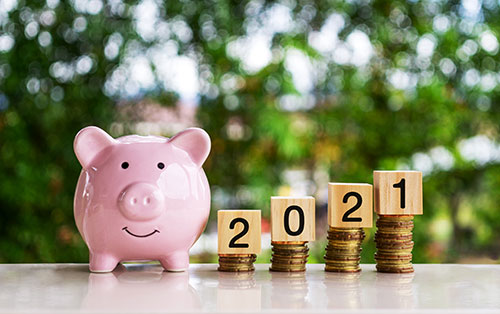
Learning how to save a down payment and actually doing the saving may seem like daunting tasks, but with the loan options available today and a few clever savings tricks, it may not be as tough as you think!
First of all, how much are you going to need to save? For the most part, home loans fall into two main categories:
- Conventional Loans
- Government agency-backed loans (such as FHA loans backed by the Federal Housing Administration)
Understanding if and where you fit into these loan programs can help determine how much of a down payment you’re likely to need.

Conventional loans
Conventional loans are the most common category of home loan. Unless you’re specifically talking about a loan offered or secured by a government agency – like an FHA or VA loan – you’re almost certainly talking about a conventional loan. They are typically offered by banks, credit unions (like Solarity!) or mortgage companies.
Traditionally, a down payment of 20% was required for conventional loans – and that was often a huge obstacle to home ownership (coming up with a $50,000 down payment for a $250,000 home is a real challenge for most of us)! Yet today, it’s common to find conventional loans with 3% or 5% down payment requirements thanks to something called PMI, or private mortgage insurance. PMI is insurance that’s paid for by the homeowner and increases their monthly mortgage payment. Its purpose is to protect the lender if the borrower becomes unable to pay, as the lender is at greater risk when making home loans with low down payments. There are definite pros and cons to PMI, with the biggest ‘pro’ being that it helps people become homeowners earlier because of reduced down payment requirements.
For our $250,000 home example, a 3% down payment equates to a $7,500 down payment, and a 5% down payment works out to $12,500. Far more manageable amounts for most people than the 20% down payment of $50,000.
FHA and VA loans
FHA loans are backed by the Federal Housing Administration (part of the U.S. Department of Housing and Urban Development) while VA Home Loans are backed by the U.S. Department of Veterans Affairs, eligible to those who have served in the armed forces who are eligible for some great terms. Many veterans qualify for benefits both during and after their military service, and surviving spouses of veterans may also receive benefits. The actual benefit is determined by several factors, including the length of service and duty status, for example.
FHA loans can be a great opportunity for buyers who may not have the 20% down payment available. There are a vast number of FHA options and programs, some with down payments as low as 3.5%. That 3.5% down payment requirement means that for the same $250,000 purchase described above, a buyer would need a $8,750 down payment.
FHA loans are offered by many lenders (including Solarity!) who can help walk you through eligibility, loan options and requirements set by the FHA. One of those requirements is that all FHA loans include an additional monthly charge for PMI (private mortgage insurance) that is similar to what’s required for conventional loans with less than a 20% down payment.

Four steps to save for your down payment
Whether you choose conventional or FHA loan, you'll likely need to accumulate a good chunk of money in your bank account.. Here are some tips on how to build your down payment nest egg.
1. Just Say No to Extras
If you are starting from scratch, saving a down payment may seem like an insurmountable obstacle. It’s not – you’ve got this! Doing an honest, deep dive on how you currently spend is the best place to find some places where you can cut a few corners.
2. Use A Separate Savings Account
3. Set up an Automatic Transfer
4. Reward Yourself
Now that is one fabulous reward!
*All loans are subject to credit and property approval. Not all applicants will qualify for a loan or the lowest rate shown. Special terms and conditions may apply.
What's your Solarity story?
We're on a mission to tell the stories of our members and how they are living their best lives. Do you have a Solarity story to share?
